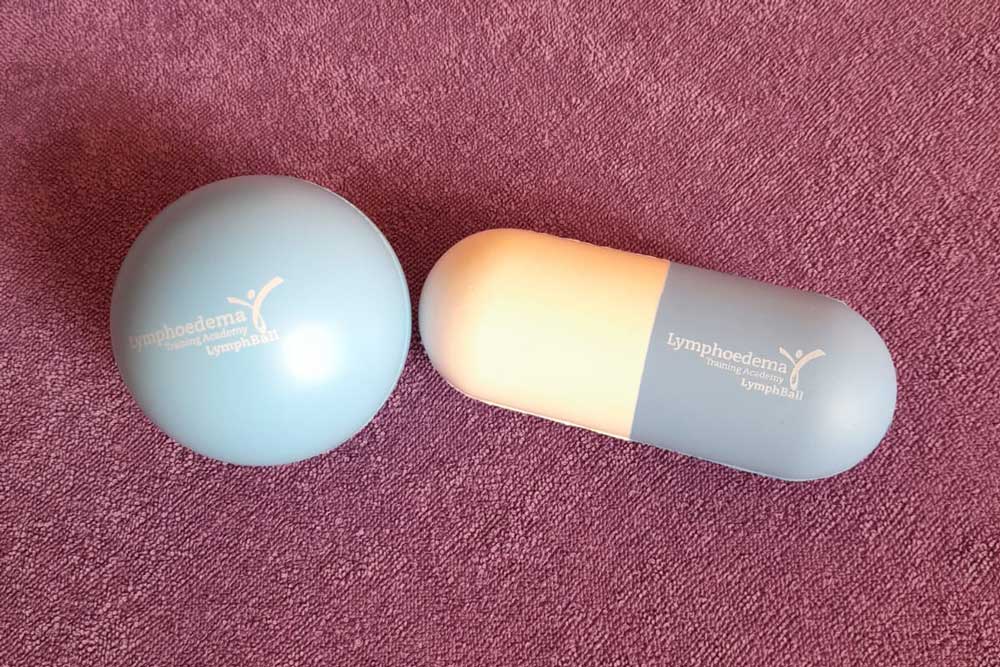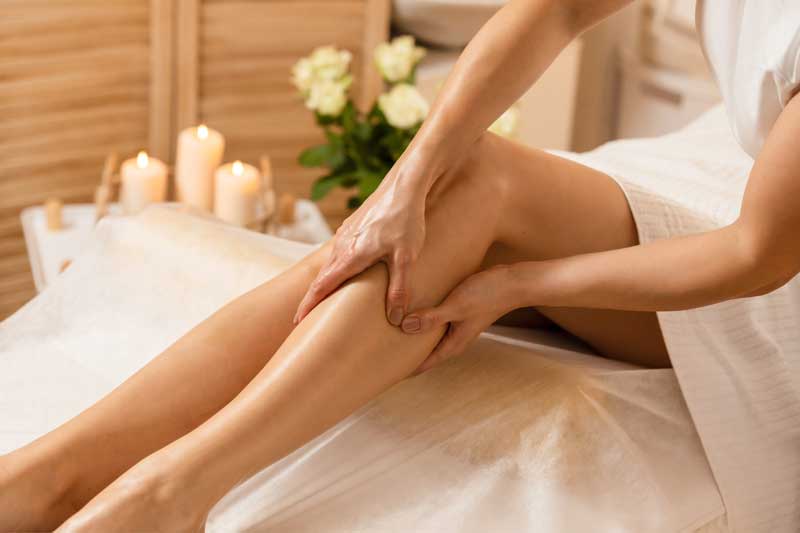Lymphoedema is one of those conditions that is rarely mentioned. People tend not to know much about it until it directly affects them or their family and friends.
Lymphoedema is a swelling of a part of the body due to a build up of fluid in the skin. It commonly presents in arms and legs, but it can affect any part of the body.
Lymphoedema can be distressing for the sufferer. The swelling can be uncomfortable and unsightly as well as restricting movement and this has a detrimental effect on the patient’s quality of life.

What Causes Lymphoedema?
Lymphoedema occurs when there is a problem with the lymphatic system. The lymphatics form part of your immune system and are responsible for cleansing your tissues and maintaining a balance of fluids in your body. If the lymphatic system is not working correctly, fluid will collect in the skin and oedema starts.
Jane Wigg (RGN MSc) LTA)
Who Gets Lymphoedema?
Anyone can develop lymphoedema. The condition is described as either Primary or Secondary.
Primary Lymphoedema is rare and is usually caused by a genetic condition affecting the development of the lymphatic system.
Secondary Lymphoedema is much more common and is the result of outside influences affecting the lymphatic system. Such as:
- Surgery, radiotherapy.
- Cancer
- Injuries and burns
- Infections such as cellulitis
- Immobility, perhaps due to medical conditions, obesity or sedentary lifestyle
- Chronic venous insufficiency (for example varicose veins)
Both primary and secondary lymphoedema are long term, incurable conditions.

What Can We Do About Lymphoedema?
Early recognition and intervention are very important in preventing the swelling from increasing. Following assessment by a suitably trained practitioner and with regular self-treatment and lifestyle changes, the condition can be managed and allow the individual to live their life as normally as possible.
Lifestyle
- Exercise and movement are very important as the lymphatics in the tissues just beneath the skin rely on this movement to function
- Healthy diet and weight management are important to prevent unnecessary strain on the lymphatic system.
- Unrestrictive clothing, jewellery, handbag straps etc. – basically, if it leaves a mark on your skin, it’s too tight and could be affecting your lymphatic drainage in that area
- Positioning of affected limb to reduce swelling, such as elevating legs where possible or placing a cushion under the arm. Regularly moving the limb will help to prevent swelling.
- Self Lymphatic Drainage (SLD) – simple massage techniques to use at home in order to improve the flow of lymph in the healthy lymph vessels. Once the vessels have cleared, the excess fluid in the swollen areas can drain away more easily.
- Good skin care including cleaning, moisturizing and prevention of infection from cuts, stings etc. which will help prevent infections caused by bacteria entering a break in the skin such as cellulitis.
Treatments
- Manual Lymphatic Drainage – a gentle massage technique delivered by a trained therapist to reduce swelling.
- Indocyanine green (ICG) lymphatic imaging and fluoroscopy guided MLD. ICG imaging involves an injection of fluorescent medical dye which allows visualization of the lymphatic vessels and lymph fluid in the tissue using a special camera. This allows identification of functioned pathways which can allow for a bespoke MLD and SLD plan optimising your treatment. For more information visit http:// www.lymphvision.com/ (email clinic @ lymphvision
- Compression garments and bandaging. A trained specialist will measure you in order to supply the appropriate compression and type of garment.
- Kinesio taping – a specific pattern of adhesive, stretchy tape is applied to lift the skin and aid the movement of lymph.
- Surgery. Specialist centres of lymphatic surgery are able to provide advice and guidance on your suitability for the types of surgery available. For more information visit https://www.thebls.com /documents-library/lymph-facts-modern-surgical-options- for-lymphoedema who can provide fact sheets regarding surgery.

Lymphoedema Treatment offered by Fit for Life Therapy
I am fully trained and qualified by The Lymphoedema Training Academy to provide Manual Lymphatic Drainage.
This is a specialist massage consisting of gentle, specific hand movements to help clear the lymph vessels and encourage movement of fluid away from the affected area.


What to Expect at a Manual Lymphatic Draininage session
The Fit for Life therapy room is warm, relaxing and private and has a shower room and toilet.
We’ll begin the appointment by taking a history of your condition, discussing how it affects your life and what outcomes you’d like to achieve with MLD. We’ll assess the swelling and, if the oedema is in the limbs, take measurements of both affected and unaffected limbs.
The massage begins with relaxing deep breathing, you’ll be seated on a comfortable couch and will be covered with a blanket – only the area we are working on will be uncovered at any time. It will help if you wear loose, non-restrictive clothing so you can be as comfortable as possible. The massage is gentle, so gentle you might wonder if it’s actually working!

Lymph Balls
The lymphatic system we’re working on lies just beneath the skin’s surface, so we need a light touch to avoid compressing the lymph vessels. The massage lasts approximately 60 minutes and you’ll be involved in the process of emptying your lymph nodes at limb joints using “lymph balls”
When the treatment is complete, where appropriate, we will take measurements again to assess any reduction in swelling.

Empowering You to Manage Your Lymphoedema
Managing lymphoedema is an ongoing process. To help you manage your condition, we will practice a sequence of Self Lymphatic Drainage massage that you can carry out at home. You’ll be given information, advice and helpful contacts as well as a Self Lymphatic Drainage leaflet demonstrating the “Fill and Flush” method of “filling” the nodes and “flushing” away the oedema.
Where to Find Additional Help
It can be difficult to access help as NHS resources are stretched. Your GP is your best first contact and can be followed by a referral to your nearest NHS Lymphoedema Clinic where you will be offered advice, specialist fitting of compression garments etc.
If your health care professional advises that MLD (Manual Lymphatic Drainage) would be appropriate for you, there is the option of private therapists who can be found on registers:
- MLD UK – Therapists Register
https://www.mlduk.org.uk/therapists/ - Lymphoedema Training Academy – Directory of Therapists
https://www.lymph.org.uk/directory-of-therapists - Dr Vodder School International
https://vodderschool.com/find_a_therapist - MacMillan Cancer Support
https://www.macmillan.org.uk/cancer-information-and-support/impacts-of-cancer/lymphoedema - LSN – Lymphoedema Support Network
https://www.lymphoedema.org/

To discuss further, or book an appointment please contact:
07989 957242
fitforlife_cornwall@yahoo.co.uk
Florence Road, Kelly Bray,
Callington, Cornwall, PL17 8EG




